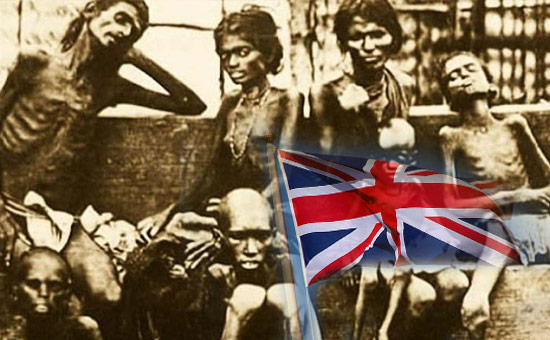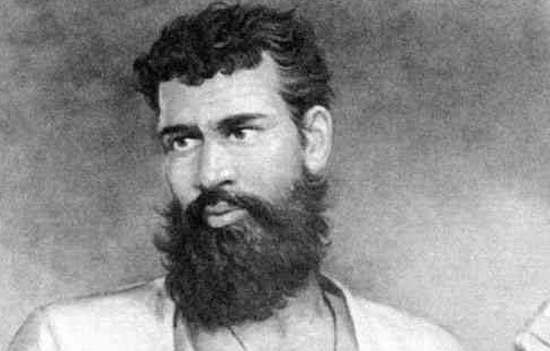- This precis (period 1818 to 1905) includes Characteristics of British rule, History from a British standpoint/Famines-Poverty, Was British Empire in India an accident and three events that require attention.
Shri
V Balachandran (ex-Special Secretary Cabinet Secretariat) wrote in The Tribune
Chandigarh Neglecting cultural czar Munshi’s efforts This goaded me to do a precis of
Foreword of 11 Volumes of The History and Culture of Indian People. The books
are a masterpiece & my constant reference book
Shri
K
M Munshi was an educationist, freedom fighter, founder of Bharatiya
Vidya Bhavan (1938), author and worked closely with Sardar Patel. He initiated
the writing of The History and Culture of
the Indian People. Shri R.C. Majumdar was General Editor. A.K. Majumdar and
S.K Ghose were Assistant Editors of Vol 9. It was first published in 1963.
K M Munshiji said, “That although efforts to prepare this massive history-writing had started in 1938, it could assume concrete shape only in 1944 with generous help from GD Birla and the Shri Krishnarpan Charity Trust.”
Precis
is split in parts. Each part has a number and title that represents content.
Let us hope these books become part of the mainstream educational system.
Part
1
covered period 1000-1300 and includes state of Indian society around 1000, why
did it survive the earlier 2,000 years, status of Sanskrit, social impact of
Muslim invasions, why lower strata of society adopted Islam, South Indian kings,
rise of Desabhashas and Bhakti.
Part
2
covers period 1300 to 1526. It tells did Khilji/Tughluq rule all of India, Timur
invasion, what is common between Timur and Vasco da gama, Religious Life then, Impact
of Islam, Religious life and Language Literature and did Muslim or Hindu ruler
of Orissa support Chaitanya Mahaprabhu.
Part
3
covers 1526-1707 i.e. Mughals. It includes Mughal rule esp. intolerance towards
Hindus, warrior Hemu and Tansen.
Part
4
covers 1707-1818. It includes Political situation post Aurangzeb and rise of
the Marathas, Changes due to influence of Western World and Economic
exploitation of India by British.
Part
5 covers 1818 to 1905 (Part 1). It includes Characteristics of British rule, History
from a British standpoint/Famines-Poverty, Was British Empire in India an
accident and three events that require attention.
My
only contribution is doing a precis of the preface. This piece is courtesy the
publisher Bharatiya Vidya Bhavan Mumbai.
British Paramountcy and Indian Renaissance (1818-1905) Preface by Dr R.C. Majumdar
This
Preface was written by General Editor, Dr R.C. Majumdar. For sake of
consistency the title remains the same except the period.
“The establishment of the British Paramountcy in India was completed in 1818. The year 1905 marks the beginning of that national struggle by Indians against the British rule. This volume describes the nature of British rule in India for nearly a century after it had become the dominant political power and the political/economic history of that period. The next volume delineates social changes and cultural renaissance which set in motion those forces and tendencies which created the Indian nation out of heterogeneous groups of peoples.
I Characteristics of British rule
The
two main characteristics of British rule were the establishment of paramount
authority all over India and the creation of a framework of an all Indian
administration on a solid basis. A review of the document supplied evidence as
to the real nature of British imperialism, and throws
off the mask of benevolence under which it was successfully hidden. Now
we can rearrange different elements of British policy in India properly in
order to draw up an integrated picture of the British rule in the 19th
century.
 Famines during British rule.
Famines during British rule.
II History from a British standpoint/Famines-Poverty
British
historians and writers wrote about British rule in the 19th century
from a British standpoint. One may go through the Vol V-VI of The Cambridge
History of India without gaining any idea of the great cultural renaissance in
India during the 19th century. There is hardly any reference to the great
social and religious reforms, literary revival, and political aspirations,
which so strongly marked the 19th century. The books on the history
of India under the British, written by English historians since 1870, which
looked at every event from the standpoint of the imperial interests of the
British. There was, besides, the over-powering sense of racial superiority
which made even eminent Englishmen look upon Indians as little better than
animals or primitive savages.
Two
other topics require space. The recurring famines
in the 19th century constitute the blackest spot in the history of
the British rule in India. The extreme poverty and misery of the masses was due
to heavy assessment of land revenue and the ruin of industry brought about by
unfair means on the part of the British and their unwillingness to help or
foster its growth.
III Was British Empire in India an accident
It
has been the general attitude of British historians to look upon the growth and
expansion of British Empire as an accident rather than the result of a
deliberate policy or design. They hold that the wars were not done due to any
aggressive or imperial policy of expansion. The wars in Punjab, Sindh and Burma
have been dealt with in some detail in order to expose the unreal character of
these pretensions.
IV Three events that have been ignored, require attention
Another
topic which has received scant attention so far in a general history of India,
is the series of armed resistance to the British
authority, which offered frequently before and after the great outbreak
of 1857. Special mention may be made of two of these violent outbreaks whose
roots lie deep in the soil before 1857.
First,
is the Wahabi Movement which is remarkable for two reasons. It was the first national movement of the Muslims to restore their
lost power and glory. The movement extended from the foothills of Hindu
Kush, across the plains of North India, to the eastern border of Bengal. The
second is the organised resistance of the poor cultivators to the
indigo-planters. But the tyranny of the white indigo-planters, backed by the
British officials, and sometimes even by the government, provoked a strange
reaction-a resolute determination on the part of the cultivators not to sow
indigo, come what may.
 Vasudeo Phadke.
Vasudeo Phadke.
The
third remarkable episode is the attempt of Vasudeo
Balwant Phadke to overthrow the British Government with the help of a secret organization. This underground movement did not achieve any success, but is very significant as the forerunner of what was known as the ‘terrorist movement in Bengal in the first decade of the 20th century’.
These as well as the agrarian riots form important episodes in the history of British India from an Indian point of view, but hardly any attention paid to them even in the comprehensive Cambridge History of India (Vol VI).” End of quote.
Chapters
in Volume IX include Expansion of British Dominions, the Annexations of
Dalhousie, Burma and Assam, Afghan Wars, Singh, Ranjit Singh, Administrative
System, Discontent and Disaffection, Disturbances and Armed Resistance, The
Mutiny and Revolt of 1857-58, India under the British Crown, War against
Manipur, Famine, Communication, Indian States, North-eastern Frontier, Foreign
Policy, Economic History of India, General Economic Conditions of People.
The above excerpts
are courtesy and copyright the publisher the Bharatiya Vidya Bhavan, Kulapati K.M.
Munshi Marg, Mumbai-400007, India.
eSamskriti has obtained permission to share from the Editorial Advisory
Board of Bharatiya Vidya Bhavan.
To
read full Foreword visit the Bhavan site and HERE (shall be uploaded shortly)
To buy
book The History and Culture of Indian People at Bhavan’s Online Store or on
Amazon
To
subscribe to the Bhavan’s Journal To
read on Culture
To
read Vande Mataram (English translation by Sri Aurobindo)
Also read
1. Was
India always a poor country
2. Famines
during British Rule
3. Wahabi
Movement
4. Aligarh
Movement
5. Vasudeo
Balwant Phadke